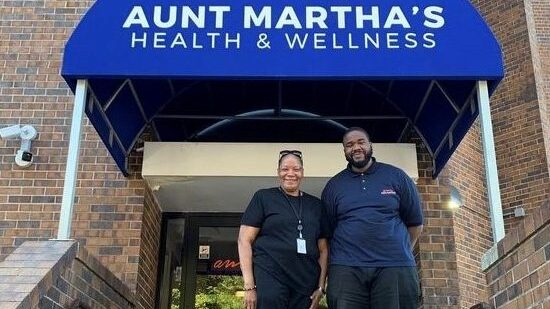While ICC staff adjusted to the increasing complexities of the youth being placed in their care — from 2018-2021 they saw a 340% increase in placements directly from psychiatric settings — a new need emerged. Despite the team’s success at stabilizing even the most high-acuity youth, it became clear that many of the kids who improved so quickly in Aunt Martha’s care needed an additional layer of support.
They had a plan in mind. They saw a “Step Down” program as key to continuing the exceptional progress so many youth and young adults had made in the relatively short-term environment of the ICC.
Their plan began to take shape. Then COVID-19 happened.

The Children’s Quarantine Center
An Urgent Call for Help
On March 21, 2020, Aunt Martha’s learned that the COVID-19 virus had been confirmed in the homes of at least one of Illinois’ DCFS foster care families. 16 days later, 16,400 positive tests had been confirmed.
These families needed to find a safe place for their foster children to go. There was no place. At least not a place that was designed to protect people from a deadly airborne virus. Aunt Martha’s, it just so happened, was positioned to mobilize an immediate response.
We proposed the Children’s Quarantine Center (CQC), which would give DCFS youth the chance to quarantine in home-like setting. Only this home would be equipped with the infectious disease control protections of a health care facility.
Creating the CQC
Prior to the coronavirus pandemic, Aunt Martha’s operated the facility now known as the Children’s Quarantine Center as a transitional living program for homeless youth and young adults.
Negative Pressure System
In addition to redesigning the space to accommodate and medically isolate the youth placed there, preparing the CQC required the installation of a hospital-grade, negative pressure ventilation system to control the spread of airborne pathogens.
Just as in a hospital setting, where negative pressure rooms are used in patient rooms to ensure infectious germs do not spread throughout the facility via the HVAC systems, the installation of such a system at the CQC effectively isolated youth while protecting them and staff in other areas of the facility from exposure.
Social Distancing
The CQC’s layout reflected its youth-centered program plan, allowing for youth and staff to maintain social distancing while living and working full-time in a congregate setting.
Because limiting exposure to visitors was essential for quarantine, the CQC was equipped with an interactive video system that allowed youth to maintain contact with their families, foster families and other individuals they relied on for support.
